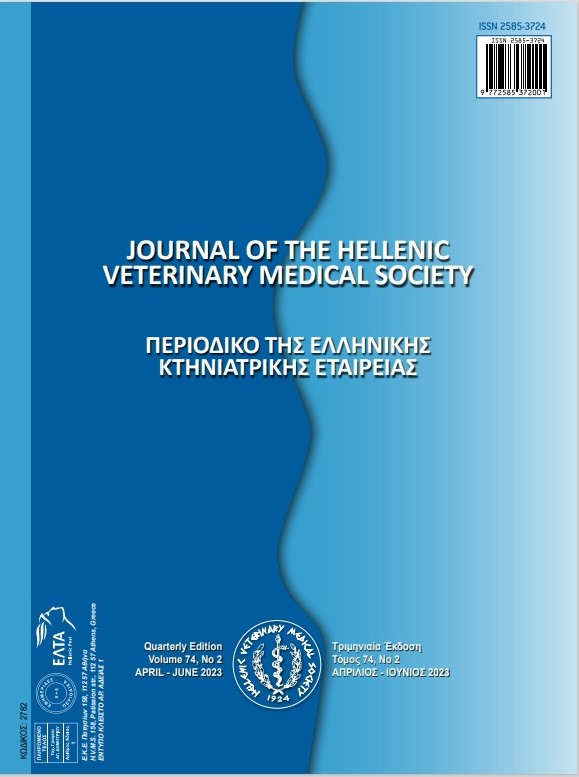Characteristics of a hard cheese manufactured using high heat-treated sheep or mixed sheep-goat milk.
Аннотация
The cheese-making conditions of hard cheeses produced from high heat treatment of sheep (S) milk or mixture of sheep-goat (SG) milk (50:50) from a mountainous area were studied. The cheeses were assessed for their composition, biochemical, textural and organoleptic characteristics during ripening and storage. The manufacturing technology included heating of milk at high temperature (90oC for 15 min), addition of starter culture at 45oC, clotting the milk with rennet, cutting and scalding-up at 47-48oC, pressing, salting in brine, ripening at 16-18oC for 30 days and storage up to 180 days. The cheese had a yellow crust, a compact texture and a pleasant flavour. The moisture of the cheeses (30-180 days), regardless of the type of milk used, ranged from 34.89% to 30.24% and the fat-in-dry matter (FDM) content was from 54.28% to 50.04%. The above results indicate that cheeses of the present study were classified as hard cheeses (referred as those with maximum moisture content 38%) of excellent quality (maximum moisture 35% and minimum FDM 47%), according to the Greek legislation. Generally, nitrogenous fractions and total free fatty acids content increased during ripening and storage, regardless of the type of milk used. In general, no differences were observed in the composition and the biochemical characteristics of S and SG (50:50). The cheeses manufactured using SG milk were harder (P<0.05) than S cheeses at 60 and 90 days of ripening and storage. The antioxidant activity of the cheeses ranged from 49.65 to 58.82 2,2-diphenyl-1 picrylhydrazyl % percentage of radical scavenging activity regardless of the type of milk used and the different sampling dates. High scores were obtained during the organoleptic evaluation, for both cheeses. In conclusion, using high heat treated milk and the present manufacturing technology an excellent quality hard cheese can be produced.
Article Details
- Как цитировать
-
Pappa, E., Kondyli, E., Vlachou, A.-M., & Malamou, E. (2025). Characteristics of a hard cheese manufactured using high heat-treated sheep or mixed sheep-goat milk. Journal of the Hellenic Veterinary Medical Society, 76(2), 9363–9374. https://doi.org/10.12681/jhvms.39401
- Выпуск
- Том 76 № 2 (2025)
- Раздел
- Research Articles

Это произведение доступно по лицензии Creative Commons «Attribution-NonCommercial» («Атрибуция — Некоммерческое использование») 4.0 Всемирная.
Authors who publish with this journal agree to the following terms:
· Authors retain copyright and grant the journal right of first publication with the work simultaneously licensed under a Creative Commons Attribution Non-Commercial License that allows others to share the work with an acknowledgement of the work's authorship and initial publication in this journal.
· Authors are able to enter into separate, additional contractual arrangements for the non-exclusive distribution of the journal's published version of the work (e.g. post it to an institutional repository or publish it in a book), with an acknowledgement of its initial publication in this journal.
· Authors are permitted and encouraged to post their work online (preferably in institutional repositories or on their website) prior to and during the submission process, as it can lead to productive exchanges, as well as earlier and greater citation of published work.




